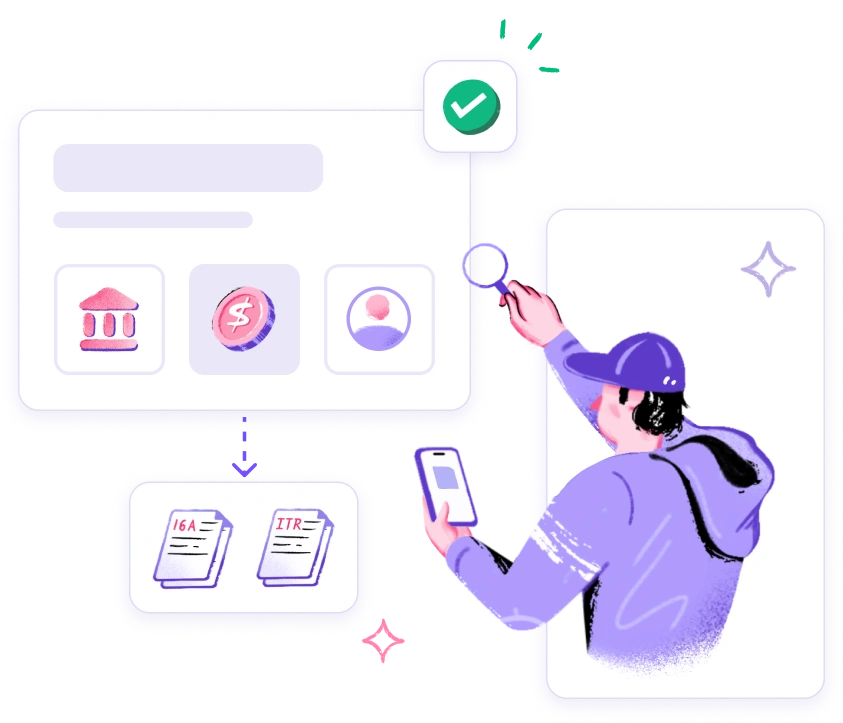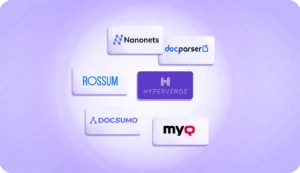You hire a new candidate and offer them a 20% salary hike. The decision is based on their last salary slip. Later, you discover the slip was fake.
This isn’t rare. A survey by ResumeLab found that one of the top five lies candidates tell is about their salary.
A salary slip is more than just a piece of paper—it’s proof of income, a key factor in hiring decisions, loan origination, and financial assessments. Fake salary slips distort payroll budgets and disrupt internal pay structures. They also impact financial risk assessments.
So, how can businesses prevent fraud? This article uncovers the red flags of salary slip fraud. It shares practical ways to verify authenticity—helping organizations stay one step ahead.
Why Salary Slip Verification Matters for Businesses
Salary slip verification is crucial for businesses. It ensures accuracy in hiring, lending, and financial transactions. Here’s why salary slips matter in different situations:
- In Hiring: A verified salary slip confirms a candidate’s real earnings. It prevents salary inflation and ensures fair compensation. This helps businesses hire genuinely qualified employees.
- In Lending and Credit Underwriting: Banks and lenders use salary slips to assess income. Verifying them ensures borrowers can repay loans. Fake slips lead to faulty risk assessments and defaults.
- In Rental Agreements and Financial Services: Landlords and financial institutions verify income before big transactions. Fake slips can lead to unpaid rents and financial fraud.
How Salary Slip Verification Works: Key Methods for Businesses
Businesses use multiple methods to ensure accuracy and detect tampered documents. These include:
Direct Employer Verification
One of the most reliable ways to verify salary details is by contacting previous employers. However, you can confirm salary figures and employment history to the extent allowed. Some companies have strict non-disclosure policies, making verification difficult.
Document Analysis
A thorough verification of documents helps identify inconsistencies. Employers check offer letters, bank statements, and increment letters for mismatched details. They also verify TDS deductions on Form 16 and salary deposits in bank statements. Any discrepancies raise red flags.
Cross-Referencing with Official Databases
Businesses can validate salary details with the help of government or official records. EPFO records, income tax filings, and employment portals provide reliable data. Cross-checking these sources ensures the salary information is accurate.
Automated Verification Solutions
AI-powered tools simplify salary slip verification. Advanced software detects tampered documents by analyzing patterns and inconsistencies. Optical Character Recognition (OCR) technology scans salary slips to identify altered data. Platforms like HyperVerge (HV) use machine learning to spot fraud instantly, reducing manual effort and human error.
By combining these methods, businesses can safeguard themselves against fake salary slips and financial fraud.
Spotting a Fake Salary Slip: Red Flags Your Business Should Watch Out For
Here are some key warning signs to look for while assessing salary slips:
- Formatting Inconsistencies: Genuine salary slips follow a professional format. Watch for mismatched fonts, alignment issues, or uneven spacing. Poor formatting in the salary slips often signals forgery.
- Incorrect Salary Structure or Deductions: Fake salary slips may have errors in PF, TDS, or professional tax calculations. If deductions don’t match standard salary structures, it’s a red flag.
- Unusual Payment Methods: Salaries are usually paid through official bank accounts. Verify the authenticity if you notice a slip showing payments in cash or personal accounts.
- Employer Details Mismatch: Check company details carefully. Fake slips may have incorrect logos, wrong addresses, or missing CIN (Corporate Identification Number). Any discrepancies should be investigated.
By spotting these red flags early, businesses can protect themselves from salary slip fraud and financial risks.
Legal Risks: Consequences of Accepting Fake Salary Slips
Accepting fake salary slips can put businesses at serious risk. It can lead to legal trouble, financial losses, and damage to reputation. Companies must stay vigilant to avoid these pitfalls.
- Legal Liabilities: Businesses can be exposed to lawsuits or penalties if fraud is proven. Employers could be accused of negligence in verifying documents. Lenders approving loans based on fake slips may violate financial regulations.
- Financial Loss: Hiring based on inflated salaries increases payroll costs. Lenders risk defaults when loans are approved using false income data. Over time, these losses can impact business stability and profitability.
- Reputational Damage: A company known for poor verification loses trust. Clients, investors, and partners may hesitate to engage with such a business. Negative publicity can make it harder to attract quality employees and customers.
- Regulatory Penalties: Ignoring verification protocols can lead to compliance violations. Authorities may impose heavy fines or restrictions. In severe cases, businesses may lose licenses or face audits.
Thorough verification protects businesses from these risks. Investing in strong verification processes ensures compliance, trust, and financial security.
Best Practices for Businesses: How to Ensure Salary Slips Are Genuine
Fake salary slips can cause serious problems. They lead to bad hires, financial losses, and legal trouble. To prevent fraud, businesses must follow these salary slip verification best practices:
Implement Robust Verification Protocols
A strong verification process helps prevent salary slip fraud. HR, lending, and finance teams must follow the same guidelines. They should check salary details, deductions, and formatting issues. A standardized approach ensures accuracy and reduces errors. Regular training keeps teams aware of fraud tactics. Clear protocols protect businesses from financial losses. They also help in making better hiring and lending decisions.
Leverage Technology for Accuracy
AI-powered tools help detect fake salary slips. They analyze fonts, layouts, and inconsistencies. These tools also validate earnings by cross-checking data with official records.
Optical Character Recognition (OCR) scans documents for tampering. Pattern recognition spots altered salary figures. AI reduces human errors and speeds up verification. Using technology helps businesses to get accurate income information to prevent fraud.
Train Your Team to Identify Fake Documents
A well-trained team can spot fake salary slips in a jiffy. HR, underwriting, and verification teams must know the red flags. Common signs include mismatched fonts, incorrect deductions, and formatting errors.
Income assessment training must be part of employee training so that employees stay updated on fraud tactics. Workshops and real-world examples help them identify forged documents. A knowledgeable team reduces risks and ensures accurate verification. Proper training protects businesses from costly mistakes.
Cross-Verify with Multiple Sources
Never rely on a salary slip alone for income assessment. Always check other documents to confirm accuracy. Compare salary slips with bank statements, tax records, and employer confirmations.
Bank statements analysis should show matching salary deposits. Tax records must reflect the declared income. Employer confirmations can verify actual earnings. Multiple verification steps reduce fraud risks. A thorough process ensures reliable hiring and financial decisions.
The Role of Digital Solutions in Salary Slip Verification
Manual verification is slow and prone to errors. Digital solutions streamline the process and improve accuracy. Automated tools reduce human mistakes and speed up verification.
AI-powered fraud detection makes verification scalable. These systems analyze patterns, detect tampering, and flag inconsistencies. They ensure businesses can verify large volumes of salary slips quickly.
Integration with Aadhaar, PAN, or EPFO databases enhances accuracy. It helps confirm employment history and real income details. Cross-checking data from official sources minimizes fraud risks.
Investing in automated verification tools builds trust and ensures compliance. It also protects businesses from financial losses.

HyperVerge helps ensure trust, compliance, and financial security. The HyperVerge Finance Data Intelligence feature simplifies this process. It automates verification, detects inconsistencies, and strengthens fraud prevention.
Simply salary slip verification now with HyperVerge Finance Data Intelligence.
FAQs
How do banks and lenders verify salary slips?
Banks and lenders check salary slips against bank statements and tax records. They may also contact employers to confirm details. Some use AI tools to detect fraud.
How can technology help with salary slip verification?
AI-powered tools like OCR detect tampering and verify data with official records. Automated systems cross-check Aadhaar, PAN, and EPFO details for accuracy. This speeds up the process and reduces errors.
How is salary verification done?
Salary slips are compared with bank deposits, tax filings, and employer confirmations. Digital solutions analyze document authenticity and flag inconsistencies.
SME questions
- How can businesses balance thorough verification with employee privacy and data protection laws?
- How do you see salary slip verification evolving in the next five years, and what innovations should businesses watch for?





















